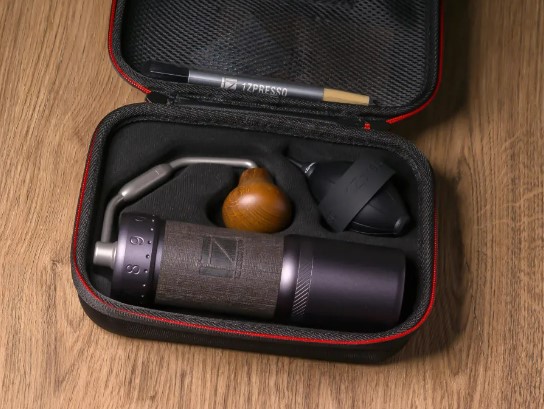Master the Art of Grinding Coffee Beans: A Guide to Coffee Grinders
For coffee fanatics, the process of grinding coffee beans is even more than simply a regular task; it is an art form that can substantially affect the taste and high quality of the last brew. Understanding the subtleties of different mill kinds, selecting the ideal work dimension, and employing the right strategies are necessary actions towards achieving that ideal cup of coffee.
Types of Coffee Grinders
There are 3 key sorts of coffee mills commonly used by coffee fanatics: blade grinders, burr grinders, and manual mills. Blade mills are one of the most standard kind, using an easy blade to chop the coffee beans. While they are budget-friendly and easy to make use of, they commonly cause unequal coffee premises due to irregular grinding. Burr mills, on the various other hand, supply even more accuracy by crushing the beans between a moving grinding wheel and a non-moving surface area. This results in a consistent grind size, which is essential for a consistent coffee flavor. Burr grinders are available in both flat and conelike forms, each offering somewhat various grinding qualities.
Hands-on mills, as the name suggests, require hands-on initiative to grind the coffee beans. They are typically liked by those that appreciate the process of hand developing coffee or for those that value portability. Manual mills can differ in style, from basic portable designs to extra elaborate counter top variations. While they might need even more effort, hands-on mills provide control over the grinding procedure, allowing users to readjust the work dimension to their choice. Each sort of coffee grinder has its benefits and perfect usage cases, dealing with the diverse choices of coffee fanatics.

Choosing the Right Work Dimension
With an understanding of the various kinds of coffee grinders, the next vital action in accomplishing the best mug of coffee is selecting the ideal grind dimension. The work size plays a significant function in establishing the taste profile of your coffee (1Zpresso J-Ultra). Different developing approaches call for details work dimensions to optimize the removal of tastes from the coffee grounds
For a rugged grind, perfect for French press and cold mixture methods, the coffee beans ought to look like breadcrumbs, providing a robust and strong taste. Medium-coarse grinds, ideal for Chemex or Clever Dripper, have a structure comparable to crude sand, providing a balanced preference.
Tool grinds, often used in drip coffee machine, have a consistency resembling normal sand, leading to an all-round taste. Great grinds, finest for espresso machines, are comparable to table salt, yielding an abundant and extreme taste. Extra-fine grinds, used in Turkish coffee, are as fine as powdered sugar and produce a strong and powerful mixture.
Grinding Methods for Ideal Flavor
To remove the fullest capacity of taste from your coffee beans, grasping appropriate grinding methods is necessary. Uniformity is crucial when it comes to grinding coffee beans for optimal taste. Making sure that the coffee beans are ground uniformly is critical to accomplish a balanced extraction throughout the brewing procedure. Among the essential methods for enhancing flavor is to change the grind size based upon the brewing technique being utilized. For instance, a fine grind is ideal for coffee devices, while a coarse work is more appropriate for French press brewing. Additionally, the grinding time plays a significant duty in taste extraction. Over-grinding can result in a bitter taste, while under-grinding might result in a sour flavor. It is recommended to trying out various work sizes and developing times to find the perfect equilibrium that matches your taste preferences. By taking note of these grinding strategies, you can boost the flavor profile of your coffee and appreciate an extra gratifying mug each time.
Upkeep and Cleansing Tips

Along with normal cleansing, it is essential 1Zpresso J-Max to inspect your grinder for any type of indicators of wear or damages. Examine the blades, burrs, and various other elements for any kind of monotony or breakdowns. Change any kind of worn-out components promptly to preserve the high quality of your coffee grind. Store your mill in a completely dry and clean setting to prevent any kind of dampness or dirt from impacting its efficiency. By adhering to these upkeep and cleaning pointers, you can ensure that your coffee grinder continues to provide delicious fresh ground coffee for many years to find.
Troubleshooting Common Mill Issues


Guaranteeing your coffee grinder functions efficiently needs proficient troubleshooting of common concerns that might develop during its use. One usual trouble with coffee mills is inconsistent grind size.
Another frequent concern is grinder blocking. This can occur when oils from the coffee beans accumulate and obstruct the mill's chute. To resolve this, disassemble the mill and tidy all parts extensively, paying special focus to the chute and burrs. Furthermore, bear in mind overfilling the hopper to prevent obstructions.
Finally, if your grinder is creating excessive sound throughout procedure, it might show a problem with the electric motor or internal elements. In such instances, it is suggested to consult the maker's guidelines for fixing steps or seek expert assistance to identify and remedy the concern immediately.
Final Thought
In conclusion, grasping the art of grinding coffee beans involves recognizing the different kinds of coffee mills, picking the ideal grind dimension, utilizing appropriate grinding techniques for ideal flavor, and preserving and cleansing the mill regularly. By following these standards and troubleshooting common grinder problems, coffee enthusiasts can raise their coffee developing experience and enjoy a tasty mug of coffee every time.